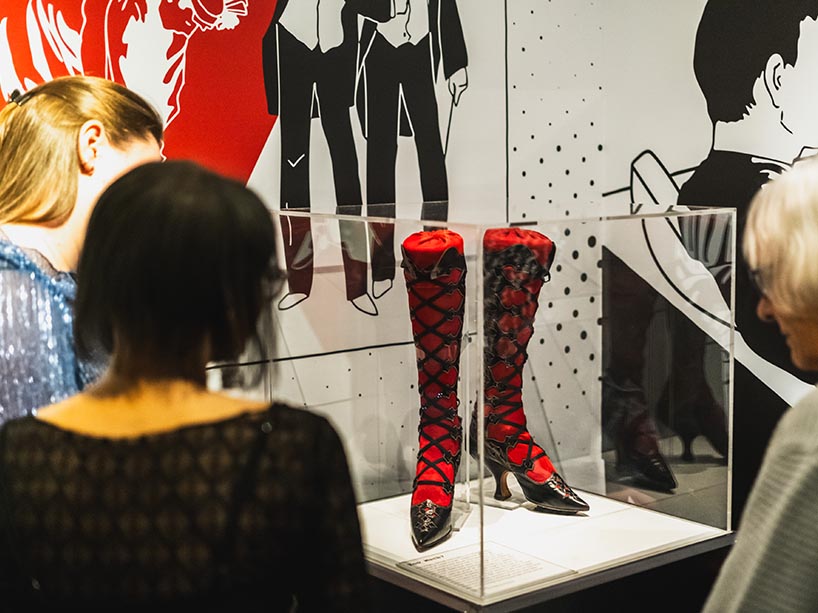Every shoe tells a story. And as the work of Toronto Metropolitan University professor Alison Matthews David shows – some shoes reveal much more than that: evidence of a crime.
Matthews David’s research, Exhibit A: Investigating Crime and Footwear, on display now at Toronto’s Bata Shoe Museum, examines the development of footwear forensics as a means of solving crime, along with the social constructions of criminality from the 19th century to today.
Curated by Matthews David alongside the museum’s director and senior curator, Elizabeth Semmelhack, the exhibition features more than 27 items from TMU’s Fashion Research Collection, and galleries in Quebec, Paris, Switzerland, the Toronto Police Museum, The Crime Museum of New Scotland Yard in London, UK and Canada’s Penitentiary Museum in Kingston, Ont.
The exhibition examines how footwear and clothing play a role in cultural ideas of criminality informed by assumptions and bias, and highlights the role of footwear in crime, policing and the judiciary system.
Sherlock Holmes, dad’s work with homicide squad
Inspiration to research the connection between crime and footwear came to Matthews David in a variety of ways.
Growing up, she had an affinity for Sherlock Holmes and murder mysteries.
Her dad’s work, too, fed her intrigue. He worked as a computer programmer for the Toronto police homicide squad, and as Matthews David followed the cases he was working on, her fascination with crime grew.
Years later, as Matthews David pursued a career in fashion history, she learned how detectives used forensic techniques to find arsenic in green coloured dresses.
It planted the seed that a link existed between fashion and the detection of poisonings.
“Plus, I think I was just taken by that image of the detective in a trench coat and a fedora – who always had a magnifying glass in hand, and always seemed to be tracking footsteps,” she said.

